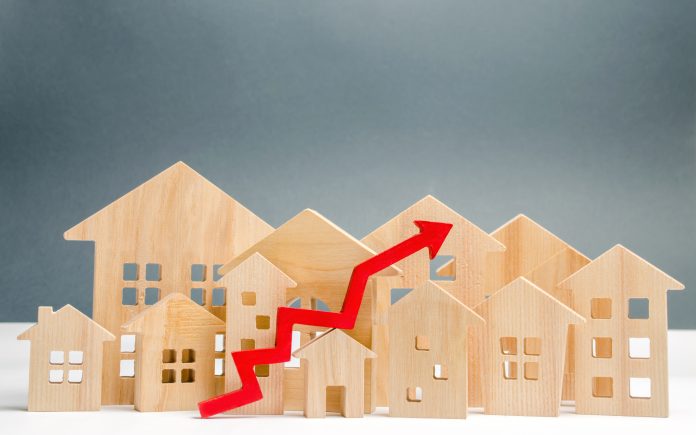The August 2022 Halifax House Price Index has been released, showing a decrease in the annual rate of growth but record high house prices
The August 2022 Halifax House Price Index has been released, showing that a typical UK property now costs a record £294,260.
Across the country, house prices increased by +0.4% in August (vs -0.1% in July) and London recorded its highest annual house price inflation in six years.
The annual rate of growth dropped to +11.5%, from +11.8% in July, the lowest level in three months. This reflects wider industry concerns regarding the impact of rising energy prices, the cost-of-living crisis, and the threat of a housing market crash.
The August 2022 Halifax House Price Index shows house prices in London and Wales have risen by over £30,000 over the last year
The regional annual change figures are based on the most recent three months of approved mortgage transaction data.
Wales remains at the top of the table for annual house price inflation, up by +16.1%, the strongest level of growth since early 2005. This means average prices have risen by £31,246 over the last year, with an average property now costing £224,858.
The South West of England also continues to record a strong rate of annual growth, up by +14.5%, with an average property cost of £313,003.
The rate of annual growth in Northern Ireland eased back further last month to +12.5%, with a typical home now costing £185,505.
Scotland also saw another slowdown in the rate of annual house price inflation, to +9.4% from +9.5%. A Scottish home now costs an average of £204,362, another record high for the nation.
While London has continued to lag behind other nations and regions, the rate of annual house price inflation in London rose again to now stand at +8.8%, its highest level in over six years.
With a typical property costing a record £554,718 the average London house price has risen by £44,669 over the last 12 months.
Government intervention may be a necessity to offset the impact of the cost-of-living crisis
Kim Kinnaird, director of Halifax Mortgages, said: “While house prices have so far proved to be resilient in the face of growing economic uncertainty, industry surveys point towards cooling expectations across the majority of UK regions, as buyer demand eases, and other forward-looking indicators also imply a likely slowdown in market activity.
“Firstly, there is the considerable hit to people’s incomes from the cost-of-living squeeze. The 80% rise in the energy price cap for October will put more pressure on household finances, as will the further increases expected for January and April. At the levels being predicted, this is likely to constrain the amounts that prospective homebuyers can afford to borrow, on top of the adverse impact of higher energy prices on the wider economy.
“While government policy intervention may counter some of these impacts, borrowing costs are also likely to continue to rise, as the Bank of England is widely expected to continue raising interest rates into next year.
“With house price to income affordability ratios already historically high, a more challenging period for house prices should be expected. However, this should be viewed in the context of the exceptional growth witnessed in recent years, with average house prices having increased by more than £30,000 over the last 12 months alone.”
How the housing market fares depends on short-term cost of living relief and long-term supply-side reforms
Stuart Law, CEO of the Assetz Group, commented:
“We are living in unprecedented economic times. How markets respond this year and into next will depend largely on the effectiveness of the Truss Government’s short-term interventions to tackle the cost of living.
“If, as expected, we see a huge financial package to freeze or cap energy bills for consumers, that’s going to be, first and foremost, a huge relief to struggling households across the country. But, it will also support demand, maintain affordability despite high prices and fuel housing market activity, especially if the Truss Government also follows through on its tax-cutting pledges and people feel like they have more money in their pocket, while interest rates still remain low by historic standards. In turn, while supply remains low, this will also support price growth, despite the economic headwinds.
“However, once we have weathered the immediate cost of living crisis, it’s the Government’s longer-term interventions in the housing market that will determine its sustainability. We will need to see financial support for business following swiftly from a consumer relief package so that rising construction costs don’t translate into runaway house prices, creating more deeply rooted issues around affordability. But, more importantly, with a new Government, we now have the chance to make serious renewed commitments to supply-side reforms, like de-regulating the planning system, so that we can boost construction output to better meet demand, and thereby support long-term housing affordability.
“Given the squeeze we have seen on household incomes this year, boosting housing supply to improve affordability and lower living costs needs to be a long-term priority for the industry, the financial sector and policymakers.”

















